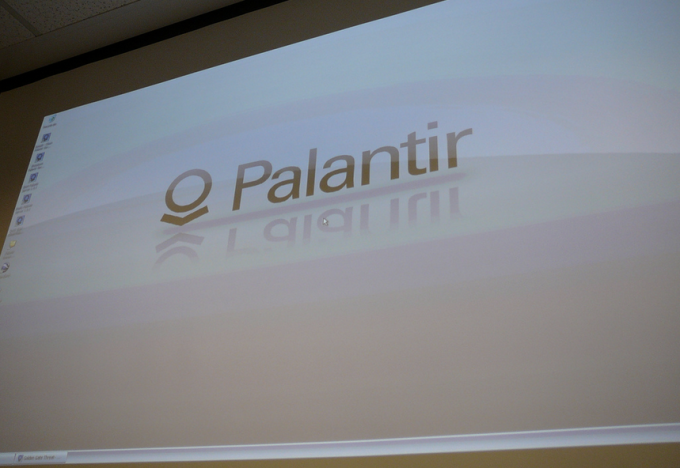http://www.afr.com/p/opinion/pinch_of_prevention_will_prevent_cTMfa5vns8VzT46UA8cigJ
A pinch of prevention will prevent a pound of turnstile medicine
PUBLISHED: 12 HOURS 58 MINUTES AGO | UPDATE: 12 HOURS 38 MINUTES AGO
 A lack of infrastructure in Australia to care for more people in a community, rather than a hospital, costs us dearly. Photo: Louie Douvis
A lack of infrastructure in Australia to care for more people in a community, rather than a hospital, costs us dearly. Photo: Louie Douvis
JOHN DWYER
Poorly considered and obviously unacceptable policies have forced the government to go back to the drawing board to consider ways to improve the cost effectiveness and sustainability of our health care system. This time let’s move beyond the government’s focus on having us pay more for a visit to our GP to concentrate on the evidence-based structural reforms we should be discussing. This time broad consultations are promised. Hopefully, the following facts and suggestions will influence decisions.
A good start would see the government stop talking about the fiscal sustainability of Medicare. Were it not for the destructive division of health care responsibilities shouldered by State and Federal governments, Canberra would not be looking at Medicare as if were isolated from the rest of the health care system. Hospital expenditure, at nearly $60 billion a year, dwarfs Medicare spending ($19 billion a year) and is increasing more rapidly. The immediate catalyst for changes to Medicare is not a fiscal crisis – our 9.3 per cent of GDP spent on health is about average for the OECD –but rather the unsatisfactory health outcomes delivered that are fuelling the growth in hospital care. A lack of any real infrastructure to provide our community with an improved capacity to prevent illness and care for more people in a community rather than hospital setting is costing us dearly.
More than 600,000 admissions to hospital each year (average cost more than $5000 per episode) could be avoided by a timely community intervention in the three weeks prior to admission. There is no doubt that the future of cost-effective, readily available hospital care is dependent on a reduction in the demand for hospital services. That must be the goal of a restructured Primary Care system. Last year Australians forked out $29 billion to supplement their health care (second only to the US in terms of out of pocket expenses). Much of this was spent on paying for surgery in the private sector. Public hospitals are swamped with complex medical patients seriously reducing their capacity to offer timely surgical services. Reducing medical admissions and restoring timely surgical services is a key to reigning in surgical costs and better educating the next generation of surgeons.
This time could our new health minister and her department open their eyes to international trends in cost effective health care that are producing better health outcomes. There is now an abundance of evidence that a focus on prevention in a personalised health system improves outcomes while slashing costs. Some systems have reduced hospital admissions by 42 per cent over the last decade. The British government has just been presented with a review that concluded that an extra 72 million ($132 million) spent on improving primary care in the community would save the system 1.9 billion ($3.5 billion) by 2020. The data available provides the government with a clear message that it does not want to hear. Only by spending more money on arestructuredMedicare will significant system wide savings be achievable.
A competent government would be looking at a timetable for introducing the highly successful Medical Home model of Primary Care, where teams of health professionals populate a practice and are available to enrolled patients. The infrastructure is available to help people avoid illness, have potential problems recognised earlier, offer co-ordinated in house care for people with chronic problems and care for many in the community currently sent to hospital. International experience tells us that a decade is required for the completion of necessary changes. We need to start on that journey and, fortunately, can do so without any panic about current health expenditure.
There is another related imperative that needs urgent action. Only 13 per cent of young doctors express any interest in becoming a GP. Only 1 per cent are contemplating a career as a rural GP. Primary Care training is rigorous and GPs are true specialists. How does all the rhetoric from Canberra about the pivotal role they play sit with the proposed $31 fee for a standard consultation. The discrepancy in the income potential for GPs when compared to that of other specialists is now huge.
Young doctors looking at the professional life of our GPs are uncomfortable with the current “fee for service” model that encourages turnstile medicine that is so professionally unfulfilling. Many GPs join corporate Primary Care providers preferring a salary. In New Zealand the government has facilitated 85 per cent of the nation’s GPs moving away from fee for service payments. The same is true for 65 per cent of US Primary Care physicians. Throughout the OECD health systems recognising the perverse incentives associated with fee for service remuneration are exploring changes that increase a GP’s remuneration for keeping people well.
There are numerous cost impositions in our health system that should be addressed before we are asked to pay more. Nine departments of health for 23 million people. A $5 billion dollar cost for the private health insurance rebate that could be better spent on achieving the above goals. $20 billion dollars spent on poor value or unnecessary procedures. The government asks: “if you don’t like our ideas then what would you do?” Well, here come the suggestions, please listen.
John Dwyer isEmeritus Professor of Medicine at the University of NSW.
The Australian Financial Review


 Since its founding in 2004,
Since its founding in 2004, 